A unique early ninetieth-century travelling clock
Signed French Royal Exchange LONDON.
SOLD
Price Enquiry
Follow Us
A unique early ninetieth century travelling clock, signed French Royal Exchange LONDON.
A unique early ninetieth century travelling clock signed on both the silvered dial and the backplate French Royal Exchange LONDON.
The small ebonised rectangular case has a circular silvered dial to the front, protected by a convex glass set in an engine-turned gilt brass bezel. There are red silk-back arched gilt brass sound frets to the sides, while the backdoor has an elaborately pierced similarly backed gilt brass panel. The case is surmounted by a countersunk gilt brass carrying handle and the clock rests on four gilt brass engine-turned feet.
The fine circular silvered brass dial has a Roman chapter-ring, surrounded by a minute track with five-minute divisions. There is an Arabic brass alarm disc in the middle, behind a fine pair of blued steel hands. At the top is a strike/silent lever S/N.
The eight-day twin fusee plated brass movement consists of going and striking trains, as well as an alarm. The going train has a most unusual construction. The centre arbor protrudes through the backplate and engages with an extremely fine gilt brass watch-like sub-movement mounted with two screws and positioning pins on the backplate. It has lever escapement with a fine jewelled hairspring balance and regulation on a silver graduated segment. The striking is regulated by a rack and snail system and sounds the hours on a bell. In addition, the movement has pull quarter repeat on two bells differing in pitch. Finally, the clock has an alarm activated by pulling a cord, the alarm time being indicated by the tail of the hour hand on the alarm disc.
The whole can be put in a fine brass bound mahogany travelling case, the bottom having a semi-circular cut-out to facilitate removing the clock from the case. It is surmounted by a shaped brass carrying handle.
Note: Given the quality of the clock, particularly of the travelling case, the clock could have been for campaigns as an officer’s clock.
The maker, French, was a clock and watchmaker at Royal Exchange. Loomes gives the dates 1810-1911.
Condition
Superb original condition throughout
Dimensions
H 22 cm x W 18 cm x D 10.5 cm
Provenance
Private collection Belgium
PREVIOUSLY SOLD
No Results Found
The page you requested could not be found. Try refining your search, or use the navigation above to locate the post.
No Results Found
The page you requested could not be found. Try refining your search, or use the navigation above to locate the post.
YOU MAY ALSO LIKE
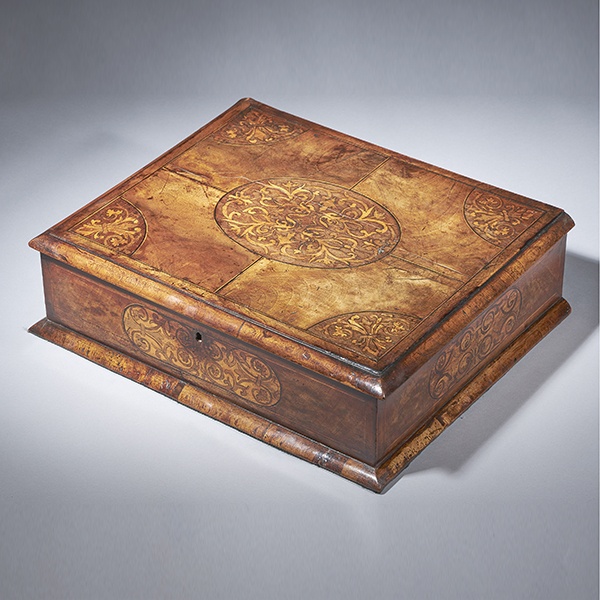
17th Century Figured Walnut and Seaweed Marquetry Lace Box
17th Century Figured Walnut and Seaweed Marquetry Lace Box £3,600 Follow Us17th Century Figured Walnut and Seaweed Marquetry Lace Box A fine and extremely rare figured walnut and seaweed marquetry 'lace box', circa.... let’s break it down -...
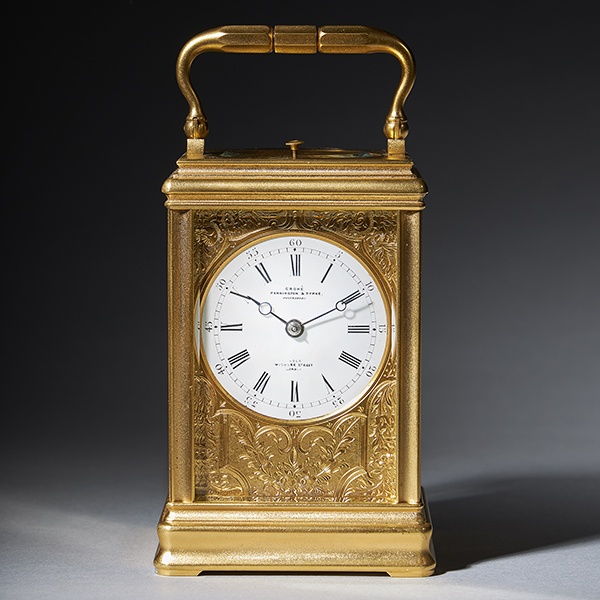
19th Century Repeating Gilt-Brass Carriage Clock by the Famous Drocourt
19th Century Repeating Gilt-Brass Carriage Clock by the Famous Drocourt £5,600 Follow Us19th Century Repeating Gilt-Brass Carriage Clock by the Famous Drocourt A superb repeating carriage clock with a gilt-brass gorge case by the famous maker...
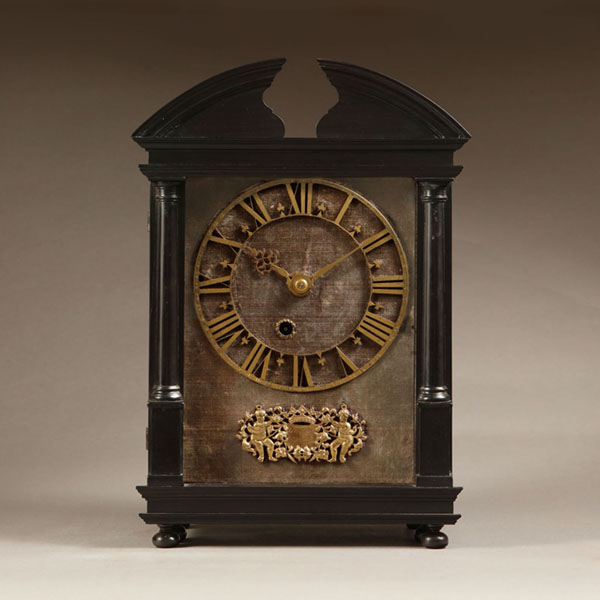
17th-Century Hague Clock Signed by Pieter Visbagh, circa 1675
Small 17th Century Hague clock made c. 1675 by Pieter Visbagh, who was apprenticed by Salomon Coster. The latter made the first pendulum clock according to the instructions of Christiaan Huygens, the internationally renowned scientist who developed the idea of applying a pendulum to a clock movement.
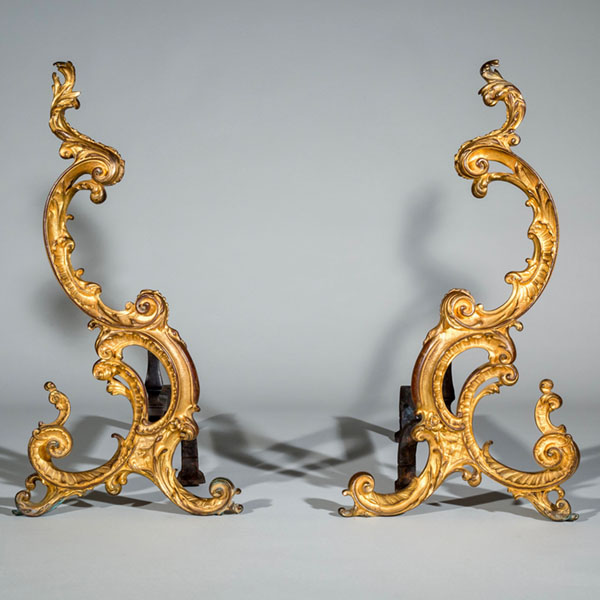
Pair of 18th-Century English Rococo Gilt Bronze Andirons or Firedogs
An exceptional pair of 18th century English Rococo gilt bronze andirons or fire dogs.
The bold shape of these andirons relate to designs of Thomas Johnson (1714–1778), one of London’s pioneers of the ‘Modern’ or French style, later known as Rococo.
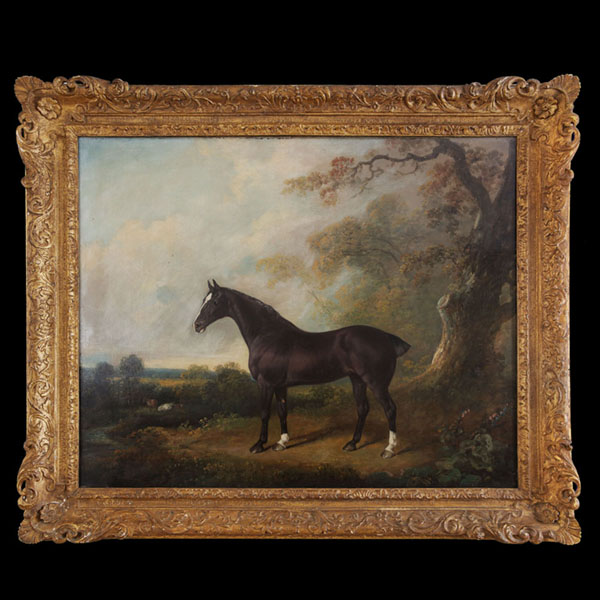
Oil Painting of a Horse Standing Proud in Woodland
Fine Art – Charles Henry Scwanfelder (1774-1837). Signed C H Schwanfelder Pinx and dated 1825. An exceptional portrait of a horse standing proud in woodland, in front of a tree-lined vista incorporating cows residing by a stream.
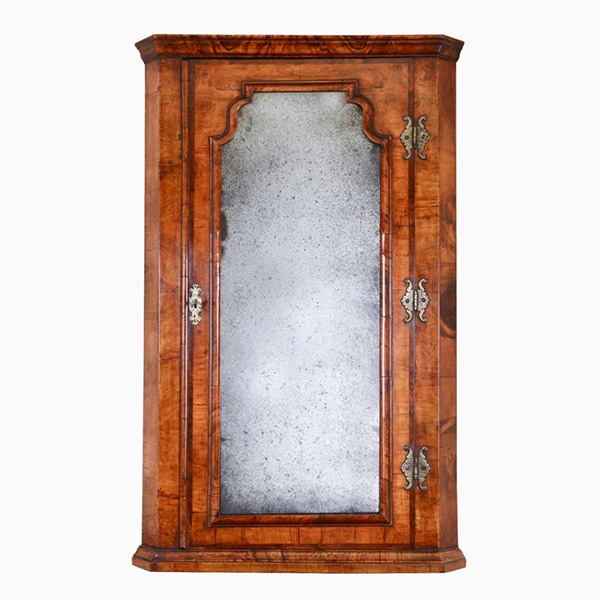
Queen Anne Walnut Corner Cupboard with Bevelled Mirror Plate
A truly remarkable find in original condition. To the door a shaped soft bevelled mirror plate is framed by a cross-grain molding of typical queen Anne design which is further cross-banded, feather-banded and edged to the opening with a single de-molding.

17th Century Figured Walnut and Seaweed Marquetry Lace Box
17th Century Figured Walnut and Seaweed Marquetry Lace Box £3,600 Follow Us17th Century Figured Walnut and Seaweed Marquetry Lace Box A fine and extremely rare figured walnut and seaweed marquetry 'lace box', circa.... let’s break it down -...

19th Century Repeating Gilt-Brass Carriage Clock by the Famous Drocourt
19th Century Repeating Gilt-Brass Carriage Clock by the Famous Drocourt £5,600 Follow Us19th Century Repeating Gilt-Brass Carriage Clock by the Famous Drocourt A superb repeating carriage clock with a gilt-brass gorge case by the famous maker...

17th-Century Hague Clock Signed by Pieter Visbagh, circa 1675
Small 17th Century Hague clock made c. 1675 by Pieter Visbagh, who was apprenticed by Salomon Coster. The latter made the first pendulum clock according to the instructions of Christiaan Huygens, the internationally renowned scientist who developed the idea of applying a pendulum to a clock movement.

Pair of 18th-Century English Rococo Gilt Bronze Andirons or Firedogs
An exceptional pair of 18th century English Rococo gilt bronze andirons or fire dogs.
The bold shape of these andirons relate to designs of Thomas Johnson (1714–1778), one of London’s pioneers of the ‘Modern’ or French style, later known as Rococo.

Oil Painting of a Horse Standing Proud in Woodland
Fine Art – Charles Henry Scwanfelder (1774-1837). Signed C H Schwanfelder Pinx and dated 1825. An exceptional portrait of a horse standing proud in woodland, in front of a tree-lined vista incorporating cows residing by a stream.

Queen Anne Walnut Corner Cupboard with Bevelled Mirror Plate
A truly remarkable find in original condition. To the door a shaped soft bevelled mirror plate is framed by a cross-grain molding of typical queen Anne design which is further cross-banded, feather-banded and edged to the opening with a single de-molding.















